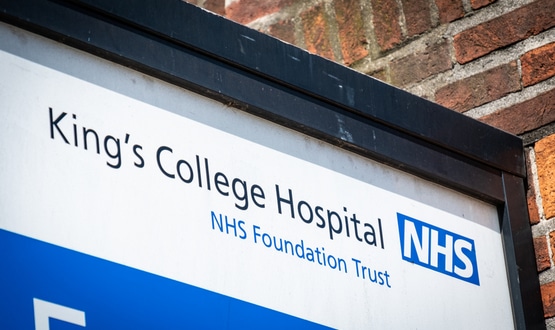Pathology and technology; developing together
- 9 August 2022

Richard Craven, UK and Ireland managing director at CliniSys, considers some of the big developments in pathology and how technology will help laboratories to confront current challenges while preparing for the future of personalised medicine.
It is impossible to turn on the TV news or to click a headline on a newspaper website without hearing about the immense pressure that the NHS is facing.
The health and care system has come out of the Covid-19 pandemic with a huge backlog of elective care that has pushed waiting lists to 6.5 million and rising. At the same time, it is facing capacity constraints that are showing up as ambulance queues and concern about access to primary care.
Pathology services are critical to tackling these challenges. I’m not sure this is widely understood; but NHS laboratories conduct 1.2 billion tests a year, and those tests are critical to diagnosis and treatment, to monitoring the progression of disease, and to ensuring the safety of blood transfusion.
If the NHS is to get on top of the challenges that it is facing, it needs its pathology services to be running as efficiently and effectively as possible, and it needs to be optimising the demand that it is putting on them.
Running and reporting tests the right way
Since the publication of Lord Carter’s review of pathology services in 2016, NHS England has been encouraging NHS laboratories to form networks on a hub and spoke model.
The aim is to improve efficiency and quality by standardising equipment and procedures, and to make better use of scarce resources by conducting more specialised tests in a smaller number of centres, while making it easier to share results across the network.
CliniSys is involved with some of the 29 networks which are being developed and what we hear, time and time again, is that implementation acts as a catalyst for standardisation, transformation and process optimisation.
Clinicians from different laboratories across a network come together to decide how they want to work in the future, and they execute those decisions through the LIMS.
NHS England is also supporting a Getting It Right First Time programme. Again, technology is essential, because it is the LIMS that provides the data required to identify unwarranted variation in the way that tests are being conducted and reported and to check that any intervention has been successful.
Making sure clinicians order the right tests
Technology also underpins demand optimisation. Modern order communications and results reporting systems don’t just enable hospital clinicians and GPs to order tests for their patients.
Increasingly, they slot into joined-up care pathways and integrate with electronic patient records and shared care record initiatives, so a wider range of medical professionals can see what tests have been ordered for a patient and what the results were.
In itself, that can reduce expensive and sometimes painful repeat testing and improve patient care. When clinicians have access to a patient’s testing history, they are in a much better position to decide whether another test is needed, or a new result is cause for alarm.
However, order comms systems can go further, by adding AI and decision support tools that can help clinicians to pick the right test, at the right time, every time.
Integrating digital pathology with pathology
While these developments are important, pathology is about more than networks, GIRFT and demand optimisation. It’s facing some big changes in the near to long-term.
One of those changes is the arrival of digital pathology, in which the traditional slide, that is viewed on a bench through a double-headed microscope, is turned into a digital image, that can be viewed on a computer from almost anywhere.
Until now, digital pathology has developed separately from LIMS and order comms systems; and that needs to change. We need to integrate the picture archiving and communications systems that manage digital pathology images with our core pathology systems and other sources of patient data.
We also need to give pathologists access to these consolidated sources of information.
Ushering in the genomic revolution
Another big change is the arrival of genomic medicine. It cost £3.5 billion to sequence the human genome back in 2000, but today the NHS is creating a Genomics Medicine Service around new genomic medicine centres and genomic laboratory hubs.
Genomic testing isn’t quite routine – yet – but it’s an increasingly important part of medical practice, particularly for those clinicians working with families with rare, inherited conditions, and in cancer services. Yet, genomic testing comes with its own challenges.
Genomic labs must be able to work with small samples of material, to share information with each other, and to report complex results back to clinicians in a way that can be used to effectively inform both patients and their families about treatment options.
Being able to do all this effectively requires a new kind of technology – the genomic LIMS; and CliniSys has responded by introducing our GLIMS Genomics solution to the UK.
Hungry for innovation
Pathology is unusual in its close relationship with technology. As pathology develops, its core technology, LIMS and order comms systems, develop with it – and vice versa. This is a huge strength for the NHS.
As health and care services turn to pathology to help them address those waiting list and capacity challenges, they can be confident that laboratories have a 30-year history of digitisation and innovation to build on.
It’s that history that is enabling pathology networks to deploy modern LIMS that can help them to standardise workflows and reduce variation. It’s that history that will allow AI and decision support to help requesters to optimise the demand that is being put on them.
And as these developments pick up speed and scale, I think we’ll see a real transformation in laboratory services. Work that can be automated will be automated, while work that is urgent or specialised will be sent to where it can be handled most effectively – which might be at another network or in a completely different country.
That will enable some of the industrialisation that we have seen in other sectors and have a positive impact on pathology’s workforce challenges. It will be easier for people to stay in the profession, by working remotely, at times that suit them, and it will enable medicine to make the best use of scarce resources, wherever they are located.
At the same time, clinicians will have more support to order the right tests for their patients, and to view the results alongside other data, including genomic testing as it comes on stream, ushering in the era of personalised medicine.
For all the challenges that Covid-19 has left behind, it is an exciting future; and it’s one that I know our customers want to deliver. They want service transformation, they want technology now, and they want everything we can give them.





1 Comments
Pathology, particularly chemistry, was one of the earliest users of IT in health alongside radiation planning. The history is much more than 30 years and more like 50.
Comments are closed.